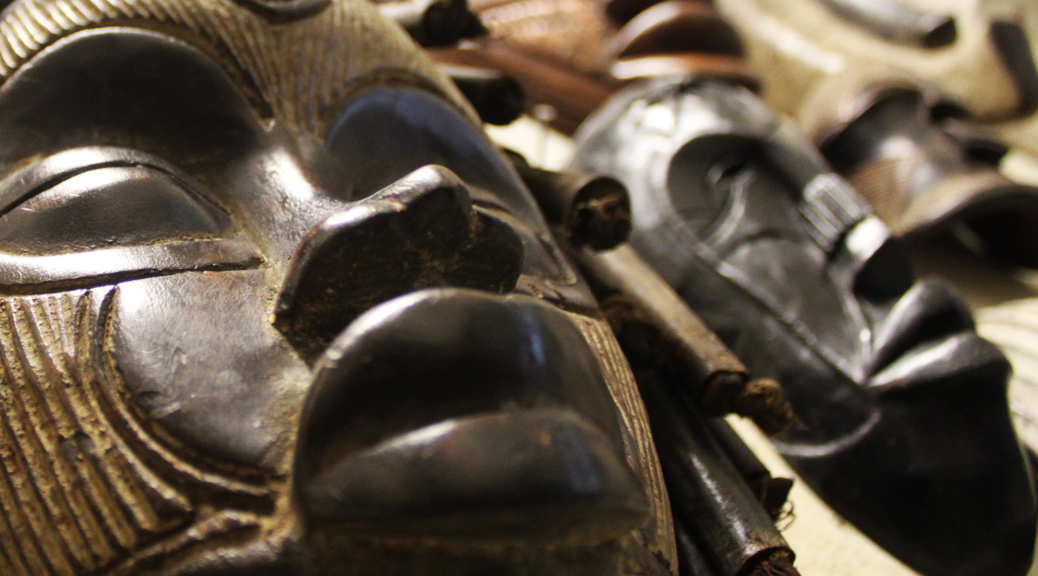Gabon, Cameroon, Equatorial Guinea
Fang tribespeople migrated from the north-west during the 18th and 19th century and are today scattered across southern Cameroon, Equatorial Guinea and Gabon. Principally they are hunters, but they also farm. Fang social structure is based on the clan, a group of individuals with a common ancestor, and on the family. They maintain tribal cohesion through the So and Ngil societies. Each family possessed a byeri, a reliquary box, in which the bones of important ancestors were kept. This box was kept by the Esa the eldest man in the family. The statuary of the Fang can be classified into three main groups: heads on long necks, half figures and full figures, standing or seated. They are carved with great simplicity , and exibit a high degree of sophistication in the coordination of bulbous forms.
Masks of the Fang were used in the secret societies. The ngil masks were worn by members of a male society called Ngil during initiation of new members and the prosecution of wrong-doers.
Fang masks worn by itinerant troubadours during masquerades, are painted white with facial features outlined in black. Typically they are large, elongated masks covered with kaolin featuring a heart-shaped face with a long, fine nose. Apparently it has been related to the dead and ancestors regarding it´s colour.

